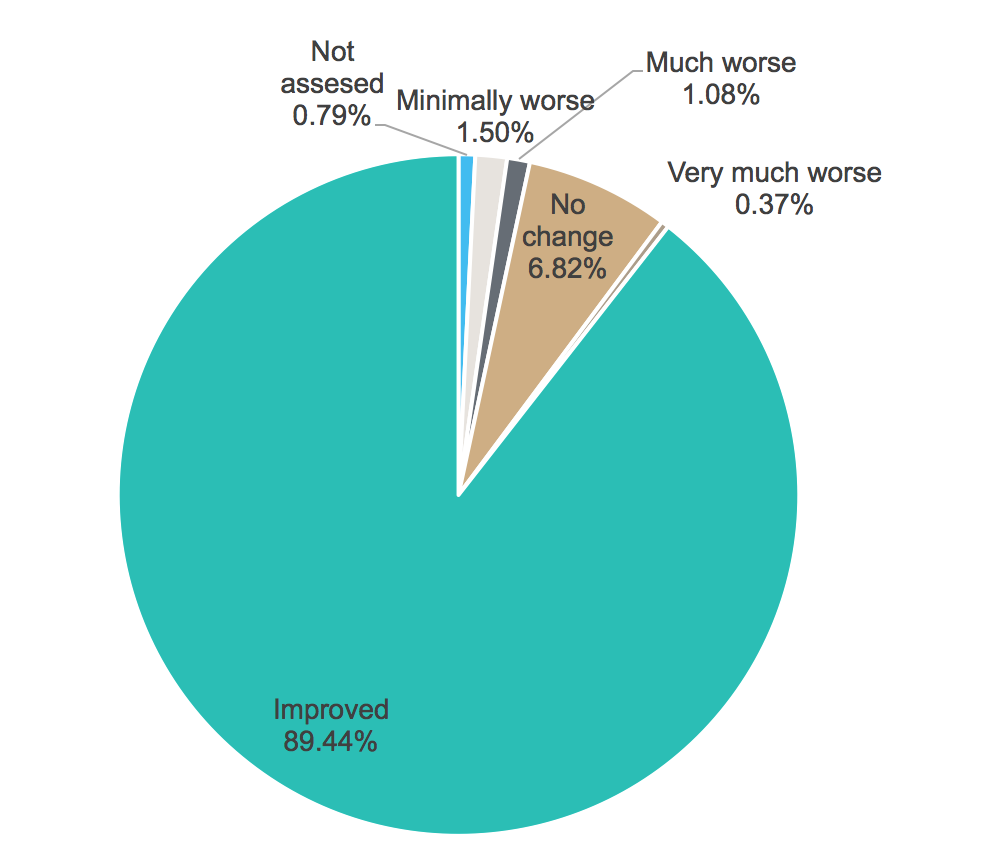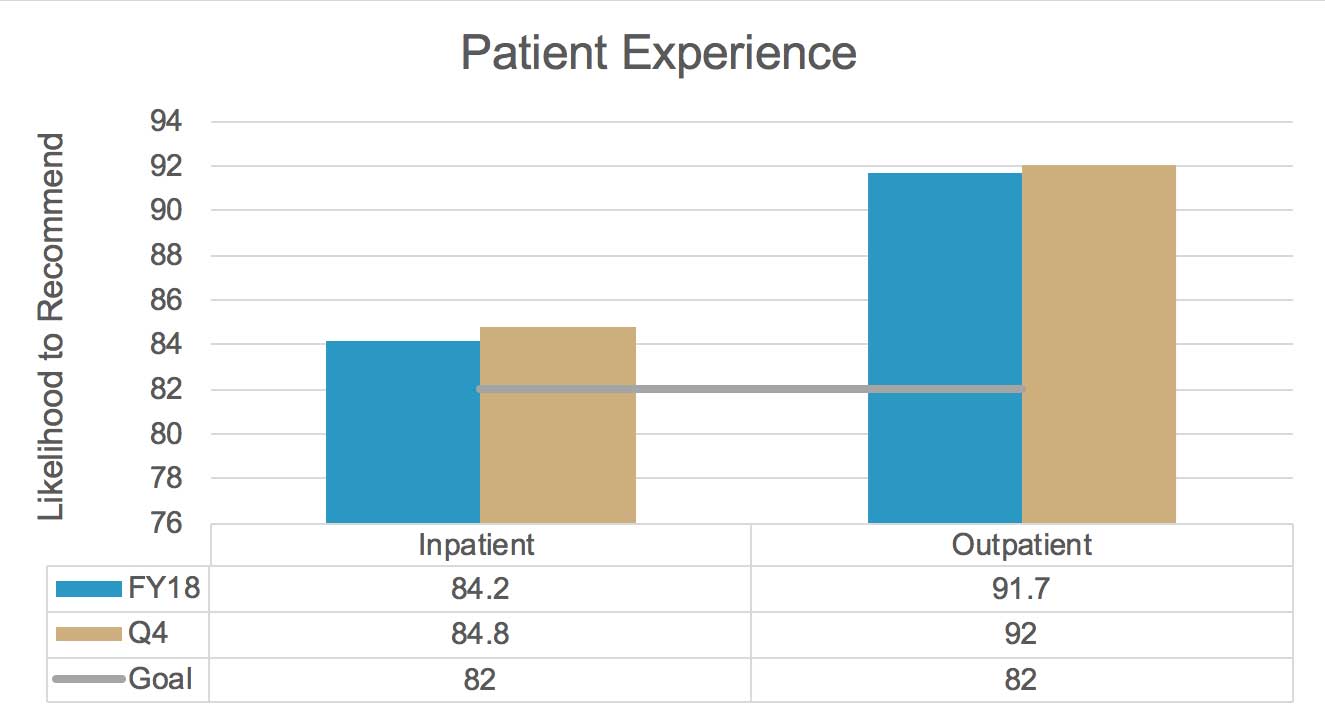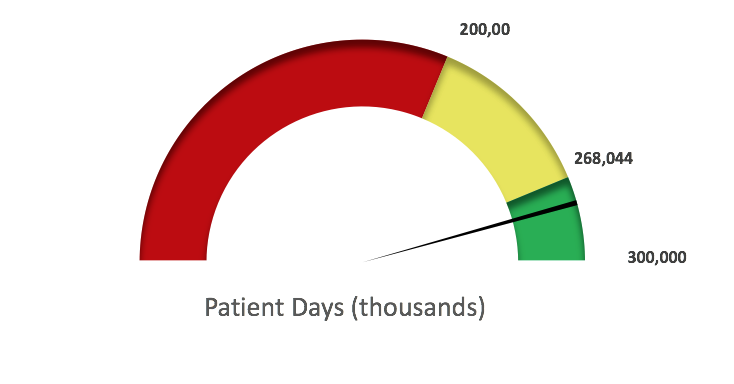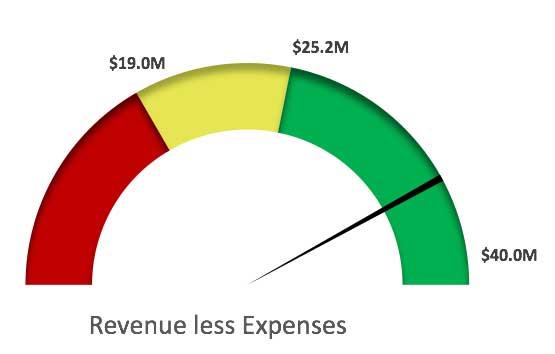
Strong system performance in FY18 lays foundation for future success serving patients
09/19/18 06:29:pmTo ensure we are accountable to our organizational goals for Clinical Effectiveness, Patient Experience, Healthy Culture, and Financial Sustainability, Rogers tracks key metrics and shares results on a quarterly basis. In FY18 Rogers continued to serve more patients, operate in a financially responsible manner, and improve our quality of care and service.
Clinical Effectiveness
Rogers is dedicated to developing and implementing an evidence-based system of care with excellent outcomes demonstrating that our treatments are highly effective.

Measure of success
- CGI score: Clinician-rated assessment of patient severity upon admission and assessment of improvement at time of discharge. Goal: At least 75% of patients are minimally, much, or very much improved.
- Through FY18, Rogers Behavioral Health has collected CGI ratings for 13,343 patients.
- 89.44% of our patients were minimally improved (17%), much improved (57%), or very much improved (15%) by the end of their treatment, as rated by the attending psychologist or psychiatrist.
Patient Experience
With patients and their families at the center of everything we do, Rogers strives to consistently provide compassionate and excellent treatment that is easy to access.

Measures of success
Press Ganey patient satisfaction results Goal: 82% or more giving a good or very good likelihood of recommending Rogers
Patient days of service, which reflects our patients’ access to high quality care. Goal: 248,832 days
Patient satisfaction FY18 results
Goal: 82% or more giving a good or very good likelihood of recommending Rogers
Inpatient: 4,542 surveys; 84.2% likelihood of recommending Rogers. (85.8% database mean; 39th percentile)
Outpatient: 3,103 surveys, 91.7% likelihood of recommending Rogers. (92.6% database mean; 38th)
FY18 (Q4)
Inpatient: 915 surveys; 82.9% likelihood of recommending Rogers (down from 85% in Q3). (85.8% database mean; 31st percentile)
Outpatient: 740 surveys; 90.9% likelihood of recommending Rogers (down from 91.5% in Q3). (92.6% database mean; 29th percentile)

Patient days of service
Fiscal Year 2018 = 276,463 days
Goal = 268,044 days
Total patient days of 276,463 exceeded the goal by 8,419 days, or 3.1%. Outpatient days made up 80% of this favorable variance. Total patient days exceeded last year by 40,977 days, a 17.5% increase.
Healthy Culture
Rogers is committed to a positive environment with engaged, resilient, and emotionally intelligent team members.
Measures of success
- Employee Engagement Survey results Goal: 74% positive response on 7-question index
- RN turnover Goal: 28% or below
Employee Engagement Results
Rogers’ composite score was 73% positive response compared to 75.7 last year. The composite is the average of seven survey questions on satisfaction, pride, and commitment to the job and organization:
- I am proud to work for Rogers Behavioral Health.
- I am willing to go beyond the requirements of my job to help the organization succeed.
- Considering everything, how satisfied are you with your job at the present time?
- Considering everything, how satisfied are you with Rogers Behavioral Health as a place to work?
- I feel a strong sense of commitment to Rogers Behavioral Health.
- I would recommend Rogers Behavioral Health as a good place to work.
- At the present time, I am seriously considering leaving Rogers Behavioral Health.
RN turnover: 28.8% through FY18
Financial Sustainability
Rogers operates in a financially responsible manner to ensure we can always meet the needs of our patients and communities.

Measure of success
- EBIDA (Revenue minus expenses) Annual Goal: $25.2 million
- Fiscal year 2018 EBIDA was $34.3 million, up $10.1 million over prior year
- Operating revenues were up 16% over prior year, driven by our PHP/IOP growth and the residential service line; whereas our expenses grew by just over 2%
EBIDA is used to sustain operations, develop new locations, and fund the charitable giving fund for patient care grants





